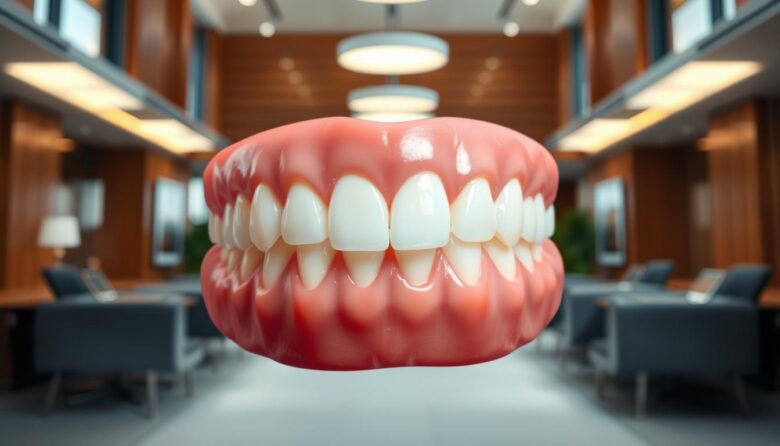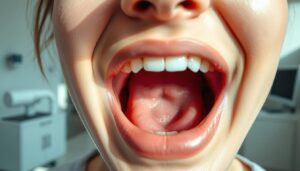Maintaining good oral hygiene is essential for preventing gum disease and ensuring overall well-being. Proper brushing and flossing play a crucial role in keeping your gums in top shape. Neglecting these habits can lead to issues like bad breath and more serious conditions.
Gum health is not just about a bright smile; it’s also linked to systemic diseases. Research shows that poor gum health can contribute to heart disease and diabetes. Understanding the signs of gum disease, such as bleeding or color changes, is vital for early intervention.
This article explores the importance of daily habits, dietary tips, and professional treatments for maintaining gum health. It also addresses common concerns like plaque buildup and unhealthy gum colors. By following these guidelines, you can protect your gums and improve your overall health.
Overview of Gum Health and Its Importance
Understanding the basics of gum health is key to preventing oral and systemic issues. Healthy gums are typically pink, firm, and do not bleed during brushing or flossing. These characteristics indicate good oral hygiene and a lower risk of developing gum disease.
Unhealthy gums, on the other hand, often show signs like redness, swelling, or chronic bleeding. These symptoms can indicate gingivitis, an early stage of gum disease. If left untreated, it can progress to more severe conditions affecting not just the mouth but overall health.
Defining Healthy Versus Unhealthy Gums
Healthy gums are characterized by their pink color and firm texture. They fit snugly around the tooth and do not bleed easily. In contrast, unhealthy gums may appear red or purple, feel tender, and bleed frequently. These signs often point to inflammation or infection.
The Impact of Gum Health on Overall Well-Being
Gum health is closely linked to systemic conditions like heart disease and diabetes. Research shows that bacteria from gum infections can enter the bloodstream, potentially causing inflammation elsewhere in the body. Early detection and treatment of gum issues can reduce these risks significantly.
Regular dental checkups are essential for maintaining gum health. Dentists can spot early signs of disease and provide treatments to prevent complications. By prioritizing gum health, individuals can protect not just their teeth but their overall well-being.
Healthy Gums Care Guide: Essential Daily Habits
Daily oral care habits are the foundation of a strong smile and long-term oral health. Simple practices like brushing and flossing can prevent issues like plaque buildup and bad breath. Consistency is key to maintaining a healthy mouth.

Proper Brushing and Toothpaste Selection
Brushing twice daily with a soft-bristled brush is essential. Hold the brush at a 45-degree angle to clean both teeth and the gumline effectively. This technique helps remove food particles and reduces the risk of plaque buildup.
Choosing the right toothpaste is equally important. Look for ADA-approved fluoride toothpaste. Fluoride strengthens enamel and fights bacteria, helping to prevent cavities and gum issues.
The Role of Flossing in Gum Health
Flossing is a critical step in any oral care routine. It removes food particles and plaque from between teeth, where a toothbrush can’t reach. Skipping this step can increase the risk of gum disease and lead tooth loss over time.
Here are some tips for effective flossing:
- Use about 18 inches of floss, winding most around your middle fingers.
- Gently slide the floss between teeth, curving it around each tooth.
- Be thorough but gentle to avoid damaging your gums.
By combining proper brushing, toothpaste selection, and flossing, you can maintain a healthy mouth and reduce the risk of oral health problems. Small, consistent efforts make a big difference in the long run.
Understanding Gum Color and What It Signals
The color and texture of your gums can reveal important clues about your oral health. Healthy gums are typically light pink, firm, and smooth. These traits indicate good oral hygiene and a lower risk of dental issues.
Normal Color Ranges and Textural Cues
Healthy gums are usually light pink, though variations can occur based on skin tone. They should feel firm to the touch and fit snugly around the teeth. Any deviation from this norm, such as redness or swelling, may signal an underlying problem.
When Color Changes Indicate a Problem
Unusual gum colors, like deep red, purple, or white, often indicate inflammation or infection. Bleeding during brushing or flossing is another red flag. These symptoms may point to gingivitis or more severe periodontal issues.
Here are some practical tips to maintain gum health:
- Rinse your mouth with water after meals to remove food particles.
- Use fluoride toothpaste and avoid rinsing with water immediately after brushing to preserve its benefits.
- Monitor your gum appearance regularly to catch early signs of trouble.
Changes in gum color or texture should not be ignored. They can be early warnings of dental problems that require attention. Regular dental checkups and a consistent oral care routine are key to keeping your gums in good shape.
How Diet Influences Gum Health
What you eat plays a significant role in the strength and resilience of your oral tissues. A balanced diet rich in essential nutrients can help reduce inflammation, fight harmful bacteria, and prevent conditions like periodontitis. On the other hand, poor dietary choices can lead to plaque buildup, tooth loss, and other oral health issues.

Foods That Promote Strong Gums
Certain foods are particularly beneficial for maintaining the health of your oral tissues. Here are some nutrient-rich options to include in your diet:
- Citrus fruits: High in vitamin C, they support collagen synthesis and reduce inflammation.
- Leafy greens: Packed with vitamins and minerals, they help strengthen oral tissues.
- Nuts and seeds: Rich in omega-3 fatty acids, they combat harmful bacteria.
- Dairy products: Calcium and phosphorus in cheese and yogurt help rebuild enamel and support tissue health.
Hydration is also crucial. Drinking water helps wash away food particles and bacteria, reducing the risk of plaque buildup.
Dietary Choices That May Harm Your Gums
Not all foods are beneficial for your oral tissues. Some can increase the risk of inflammation and disease. Here are the ones to avoid:
- Sugary snacks and drinks: They feed harmful bacteria, leading to plaque and tooth decay.
- Acidic foods: Citrus juices and sodas can erode enamel and irritate tissues.
- Processed foods: Often high in sugar and low in nutrients, they contribute to poor oral health.
Recognizing early symptoms like redness, swelling, or bleeding can help you address diet-induced issues before they escalate. A nutrient-rich diet, combined with proper oral hygiene, is key to maintaining a healthy mouth.
“Your diet is not just about your waistline; it’s a cornerstone of your oral health.”
By making informed dietary choices, you can protect your oral tissues and reduce the risk of serious conditions. Small changes in your eating habits can lead to significant improvements in your overall well-being.
Managing Gum Disease and Preventing Tooth Loss
Taking proactive steps can help prevent gum disease and tooth loss. Early detection and consistent care are essential for maintaining a strong smile. By understanding the signs and implementing preventive measures, you can protect your oral health effectively.

Recognizing Early Signs of Gingivitis and Periodontitis
Gingivitis often starts with mild symptoms like redness, swelling, or bleeding during brushing. If untreated, it can progress to periodontitis, a more severe condition. Signs of periodontitis include receding tissues, persistent bad breath, and loose teeth.
Monitoring your mouth for these changes is crucial. Early intervention can stop the progression and reduce the risk of complications. Regular self-checks and professional evaluations are key to catching issues before they worsen.
Preventive Steps and Regular Dental Checkups
Effective brushing is one of the simplest ways to reduce the risk of gum disease. Use a soft-bristled brush and fluoride toothpaste to clean teeth and the gumline thoroughly. Flossing daily removes plaque from hard-to-reach areas, further protecting your tissues.
Green tea is another excellent addition to your routine. Its anti-inflammatory properties can help reduce swelling and fight harmful bacteria. Drinking it regularly can support overall oral health.
Your diet also plays a significant role. Foods rich in vitamins and minerals, like leafy greens and dairy products, strengthen tissues and reduce inflammation. Avoiding sugary snacks and drinks can also lower the risk of plaque buildup.
Regular dental checkups are essential. Dentists can spot early signs of disease and provide professional cleanings to remove stubborn plaque. These visits are a critical part of maintaining a healthy mouth.
“Prevention is always better than cure. A little effort today can save you from major dental issues tomorrow.”
By combining these strategies, you can effectively manage gum disease and protect your teeth. Small, consistent efforts make a big difference in the long run.
Home Remedies and Professional Treatment Options
Effective oral care combines daily habits with professional treatments for lasting results. Simple at-home practices, paired with timely dental visits, can prevent serious issues and maintain a strong smile. Knowing when to rely on home remedies and when to seek expert help is crucial for optimal oral health.
At-Home Care Practices for Oral Health
Using the right toothbrush is the foundation of good oral hygiene. A soft-bristled brush, used twice daily, helps remove plaque without damaging tissues. Pair it with fluoride toothpaste for added protection against decay.
Incorporating fruit into your diet can also support oral health. Apples and strawberries act as natural cleansers, stimulating saliva production and reducing bacteria. This simple dietary change can make a big difference.
Here are some additional tips for effective at-home care:
- Replace your toothbrush every three months or when bristles fray.
- Use mouthwash or other dental products to target hard-to-reach areas.
- Floss daily to remove food particles and prevent plaque buildup.
When Professional Dental Intervention Is Needed
Persistent bleeding, discomfort, or changes in gum color are signs to visit a dentist. These symptoms may indicate advanced issues like periodontitis or lead tooth problems. Early intervention can prevent complications.
Dentists provide treatments like deep cleanings, scaling, and root planing to manage severe conditions. Regular checkups ensure issues are caught early, saving time and money in the long run.
“A proactive approach to oral health combines daily care with professional expertise for the best results.”
Balancing home remedies with professional guidance ensures a healthy mouth and a confident smile. Small, consistent efforts today can prevent major issues tomorrow.
Lifestyle Factors That Affect Gum Health
Lifestyle choices play a significant role in the health of your oral tissues. Habits like smoking, stress management, and dietary decisions can either protect or harm the integrity of your mouth. Understanding these factors is key to maintaining a strong smile and preventing issues like tissue loss.

The Impact of Smoking and Tobacco Use
Smoking and tobacco use are among the most harmful lifestyle factors for oral tissues. These habits reduce blood flow, making it harder for tissues to heal and increasing the risk of discoloration and recession. Over time, they can lead to severe issues like tissue loss and tooth decay.
Quitting smoking is one of the best steps you can take to improve your oral health. It not only reduces the risk of tissue damage but also enhances overall well-being. Even cutting back can make a noticeable difference.
Stress and Other Contributing Factors
Stress is another major contributor to oral health problems. It weakens the immune system, making it harder for your body to fight off infections. This can exacerbate symptoms like redness, swelling, and bleeding, which are early signs of gum issues.
Managing stress through techniques like meditation, exercise, or even drinking tea can help. Green tea, in particular, has anti-inflammatory properties that support tissue health. Incorporating it into your routine can be a simple yet effective way to protect your mouth.
Dietary choices also play a crucial role. Consuming nutrient-rich foods like vegetables can strengthen tissues and reduce inflammation. On the other hand, neglecting proper brushing flossing routines due to busy lifestyles can lead to plaque buildup and other problems.
“Small changes in your daily habits can lead to significant improvements in your oral health.”
By addressing these lifestyle factors, you can reduce the risk of tissue loss and maintain a healthy mouth. Simple adjustments, like quitting smoking, managing stress, and eating a balanced diet, can make a big difference in the long run.
Recognizing Warning Signs and Symptoms
Spotting early signs of gum issues can prevent long-term oral health problems. Good hygiene practices, like regular brushing and flossing, are essential for maintaining a healthy mouth. However, even with proper care, subtle changes can occur, signaling the need for attention.
Key Indicators of Emerging Gum Disease
Several symptoms can indicate the onset of gum disease. These include:
- Bleeding during brushing or flossing: This is often the first sign of inflammation.
- Persistent bad breath: Caused by bacteria buildup in the mouth.
- Recession: When the gumline pulls away from the teeth, exposing more of the tooth.
Other subtle signs, like tenderness or changes in gum color, can also be early warnings. Regularly monitoring these symptoms can help keep your mouth in good shape.
When to Seek Professional Advice
If you notice any of these symptoms, it’s important to act quickly. Early intervention can help keep minor issues from becoming major problems. Here are some signs that it’s time to consult a dentist:
- Bleeding that doesn’t improve with better hygiene practices.
- Pain or discomfort that persists for more than a few days.
- Visible changes in gum appearance or texture.
Incorporating fruit and vegetable-rich foods into your diet can also support oral health. However, if symptoms persist, professional advice is crucial. Dentists can provide treatments to address underlying issues and keep gum health on track.
“Early detection and action are your best defenses against gum disease. Don’t ignore the signs—your smile depends on it.”
Conclusion
Maintaining strong oral tissues requires a combination of daily habits, a balanced diet, and regular dental visits. Recognizing early signs like gum bleed can help address potential issues before they become serious problems. Consistent brushing, flossing, and monitoring changes in texture or color are essential steps.
Diet plays a key role, with foods rich in fiber and nutrients supporting overall oral health. Lifestyle factors, such as quitting smoking and managing stress, also contribute to a healthier mouth. Addressing these factors ensures long-term well-being.
Proactive care is the best way to prevent conditions like inflammation or tissue loss. Schedule regular dental checkups and stay vigilant about your oral hygiene routine. A small effort today can lead to a confident, lasting smile tomorrow.




